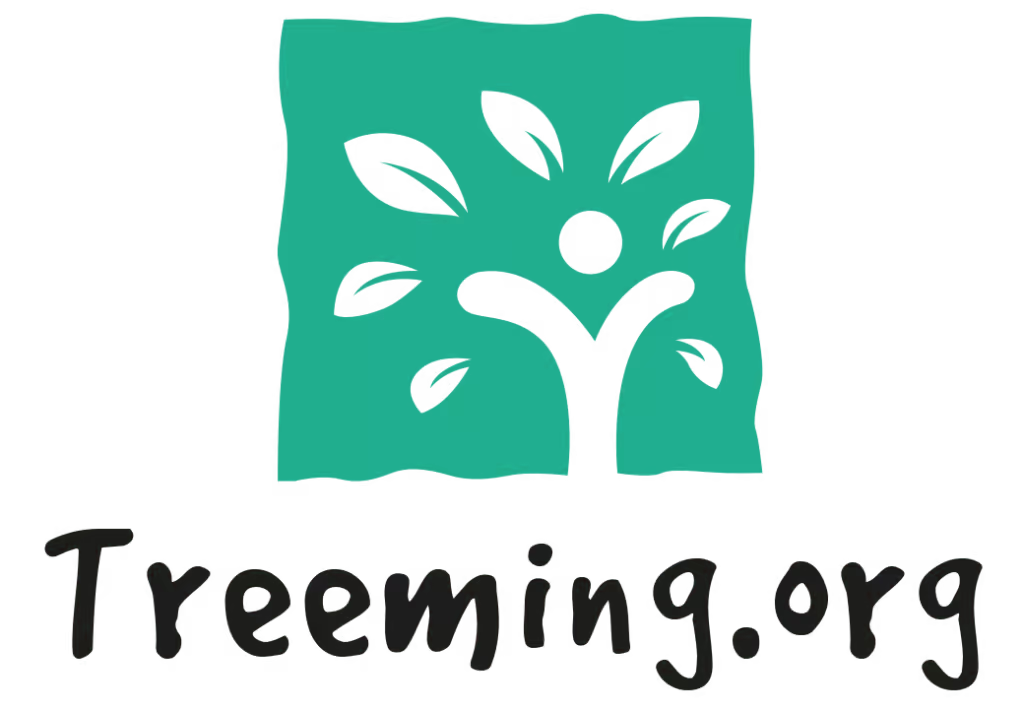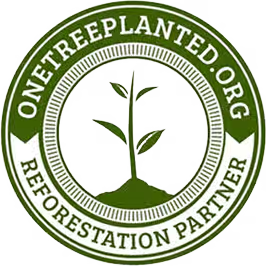Forest bathing, or shinrin-yoku, is a practice that started in Japan in the 1980s. It’s all about taking in the forest atmosphere, not just with your eyes, but with all your senses. It’s like a slow, mindful walk in the woods, where you’re not rushing to get anywhere but just soaking in the sights, sounds, smells, and textures around you. This isn’t just a walk in the park, though; it has some real benefits. People say it helps reduce stress and anxiety, boosts your mood, and even helps with concentration. Plus, it can be a spiritual experience, connecting you with nature in a way that feels almost sacred. Healing plants in the forest play a big role in this, offering not just physical benefits but spiritual ones too. Let’s dive into how these elements come together in the art of forest bathing.
Key Takeaways
- Forest bathing is a mindful practice that originated in Japan, focusing on sensory engagement with nature.
- It’s not about exercise or reaching a destination; it’s about being present and connecting with the forest.
- The practice can reduce stress, improve mood, and enhance mental clarity.
- Healing plants in the forest offer both physical and spiritual benefits.
- Forest bathing encourages a deeper, spiritual connection with nature, making it a holistic experience.
Understanding the Spiritual Essence of Forest Bathing
Exploring the Origins of Shinrin-yoku
Shinrin-yoku, or forest bathing, began in Japan in the 1980s. It was a response to the stressful, fast-paced life many were leading. This practice isn’t about hiking or exercising; it’s about slowing down and immersing yourself in the forest’s atmosphere. Imagine walking through a forest, feeling the earth under your feet, and breathing in the fresh, aromatic air. This sensory immersion helps you connect deeply with nature, fostering a sense of peace and clarity.
The Role of Mindfulness in Nature Connection
Mindfulness is at the heart of forest bathing. It’s about being present, noticing the rustle of leaves, the chirping of birds, and the gentle sway of trees. This practice encourages you to let go of daily stressors and just be. By focusing on the present moment, you can truly appreciate the natural world around you. This mindfulness not only enhances your nature connection but also promotes inner calm and self-awareness.
Spiritual Benefits of Engaging with Healing Plants
Engaging with healing plants during forest bathing can deepen your spiritual experience. These plants, like certain herbs and trees, have been used for centuries in various spiritual practices. Their presence in the forest can provide a sense of grounding and connection to the earth. By incorporating mantras or meditative practices with these plants, you can enhance your spiritual journey, finding a greater sense of belonging and peace with nature. Forest bathing promotes inner peace and clarity, enhancing self-awareness and overall well-being.
The Healing Power of Nature: A Deep Dive into Forest Bathing
How Forest Bathing Reduces Stress and Anxiety
Forest bathing, or "Shinrin-yoku," is a practice that immerses you in the forest atmosphere, offering a break from the chaos of daily life. Spending time among trees can significantly lower cortisol levels, the hormone linked to stress. The natural environment encourages relaxation by engaging the parasympathetic nervous system, which calms the body. It’s not just about walking in the woods; it’s about being present. As you breathe in the fresh air and listen to the rustle of leaves, stress and anxiety begin to fade.
The Science Behind Healing Plants in Forests
Plants in the forest do more than just provide a scenic view. They release phytoncides, which are natural oils that protect them from germs and insects. When we breathe these in, they boost our immune system by increasing the activity of our natural killer cells. These cells play a vital role in fighting off viruses and even cancer. The effects can last for days after a forest visit, making it a powerful ally in maintaining health.
Emotional and Psychological Benefits of Nature Immersion
Being in nature isn’t just good for the body; it’s good for the mind too. Spending time in the forest can improve mood and mental clarity. By reducing stress, it can also help with better sleep and a more positive outlook on life. Here are some benefits:
- Improved focus and concentration, especially in children and adults with ADHD.
- Enhanced creativity and problem-solving skills.
- A sense of peace and calm that lingers long after you’ve left the forest.
Forest bathing isn’t just a walk in the park; it’s a mindful practice that reconnects you with nature, offering both physical and mental rejuvenation. It’s about slowing down and appreciating the world around you, one breath at a time.
Incorporating forest bathing into your routine can help clear mental clutter and improve mental clarity, making it a valuable practice for anyone looking to enhance their wellbeing.
Engaging the Senses: A Pathway to Spiritual Renewal
Visual and Auditory Experiences in the Forest
When you step into a forest, it’s like entering a different world. The colors are vibrant, and the sounds are alive. The sight of sunlight filtering through the leaves can be mesmerizing. Listening to the gentle rustle of leaves and the distant call of birds can be incredibly calming. These visual and auditory experiences ground you in the present moment, offering a break from the constant noise of daily life.
The Aromatic Influence of Phytoncides
Forests have a unique scent, thanks to compounds called phytoncides. These natural oils, released by trees, have been shown to boost your immune system. Imagine taking a deep breath and feeling the stress melt away. The fresh, earthy aroma isn’t just pleasant; it’s therapeutic. Research even suggests that phytoncides can increase natural killer cell activity, which plays a role in fighting off illness.
Tactile and Taste Sensations in Nature
Touching the rough bark of a tree or feeling the soft moss underfoot connects you to the forest in a tactile way. It’s about slowing down and noticing the small details. Some people even taste the wild berries or edible plants they find, though you should always be sure of what’s safe to eat. Engaging your senses fully helps deepen your connection to nature, making the experience more meaningful.
Taking time to engage with nature through all your senses can lead to a profound sense of peace and renewal. It’s about being present and open to the world around you, finding spirituality in the simple act of being in the forest.
The Interconnection of Gaia Theory and Forest Bathing
Understanding Gaia as a Living Entity
Gaia Theory, put forward by James Lovelock, suggests that Earth operates as a single, self-regulating system. It’s like seeing our planet as one big organism where everything is connected. This idea aligns closely with forest bathing, where people immerse themselves in nature to feel that connection. Instead of viewing Earth as just a resource, Gaia Theory invites us to see it as a living being that we share a relationship with. This shift in perspective can be deeply transformative, encouraging us not just to take from nature but to engage with it on a more meaningful level.
Relational Ecology and Human-Nature Connection
Both Gaia Theory and forest bathing emphasize the importance of relational ecology. This means understanding how all parts of nature, including humans, are interconnected. When you’re in a forest, you might notice how the trees, animals, and even the soil work together. This isn’t just a random occurrence; it’s a delicate balance that sustains life. Forest bathing encourages us to experience this firsthand, fostering a sense of belonging and connection to the natural world.
Deep Listening and Embodied Awareness
Deep listening is a practice that involves tuning into the subtle sounds and energies of nature. In the context of Gaia Theory, this means being open to the Earth’s rhythms and presence. Forest bathing similarly encourages an embodied awareness, where you use all your senses to engage with the environment. This isn’t about identifying plants or animals but about feeling the forest’s life force. By quieting our minds and really listening, we can develop a richer, more intuitive connection to nature. This practice can lead to personal healing and a renewed sense of responsibility towards the environment.
Embracing the concept of Gaia and the practice of forest bathing can open up new ways of seeing our place in the world. It’s about moving beyond just being in nature to becoming a part of it, recognizing our role in the larger ecological community. This shift not only benefits our personal wellbeing but also fosters a deeper commitment to caring for our planet.
Practices and Rituals: Enhancing the Spiritual Journey
Guided Forest Bathing Experiences
Guided forest bathing, or Shinrin-Yoku, is more than just a walk in the woods. It’s a structured experience designed to deepen your connection with nature. A guide helps participants slow down, breathe deeply, and engage with their surroundings. These sessions often start with a simple breathing exercise, followed by a slow, mindful walk. Participants are encouraged to notice the sights, sounds, and smells around them. This deliberate slowing down can lead to a profound sense of peace and clarity.
Incorporating Meditation and Mindfulness
Adding meditation and mindfulness to your forest bathing practice can amplify its spiritual benefits. Meditation helps quiet the mind, allowing you to be fully present in the moment. Here’s a simple way to incorporate it:
- Find a quiet spot in the forest.
- Sit comfortably, close your eyes, and focus on your breath.
- Allow thoughts to come and go without judgment, gently bringing your attention back to your breath.
This practice not only enhances your forest bathing experience but also fosters a deeper connection with nature.
Creating Personal Rituals in Nature
Creating personal rituals can transform ordinary nature walks into spiritual journeys. These rituals can be as simple as pausing to express gratitude for the natural world or as elaborate as setting intentions before a walk. Here are some ideas:
- Start your walk with a moment of silence to appreciate the beauty around you.
- Collect natural objects like stones or leaves that resonate with you and create a small altar at home.
- Write down reflections or insights gained during your time in nature.
Embracing these practices can make each forest visit a unique and enriching experience, helping you cultivate a deeper relationship with the world around you.
Cultivating a Deeper Relationship with Nature
Developing a Sense of Belonging in the Natural World
Feeling at home in nature doesn’t just happen; it’s something you cultivate over time. Forest Bathing can help you achieve the Flow State by immersing yourself in nature and being fully present. Start by spending more time outdoors, whether it’s a walk in the park or a hike in the mountains. Pay attention to the small details—the rustle of leaves, the chirping of birds, or the way sunlight filters through the trees. This practice isn’t about identifying every plant or animal but about feeling part of the ecosystem.
- Spend at least 30 minutes in nature daily.
- Engage all your senses to appreciate your surroundings.
- Reflect on how nature makes you feel rather than what you know about it.
When you immerse yourself in nature, you begin to see yourself as part of a larger whole. This shift in perspective can lead to a profound sense of peace and belonging.
The Role of Healing Plants in Spiritual Practices
Plants have been used in spiritual practices for centuries, and for good reason. They hold a unique ability to ground us and connect us to the earth. In forest bathing, this connection is deepened as you learn to recognize and appreciate the healing properties of different plants. Whether it’s the calming scent of lavender or the invigorating aroma of pine, these plants can enhance your spiritual journey.
- Learn about local plants and their traditional uses.
- Incorporate plant-based rituals into your daily routine.
- Use essential oils or teas to connect with plant energy.
Fostering Environmental Stewardship Through Forest Bathing
Forest Bathing isn’t just about personal healing; it’s also about developing a responsibility towards the environment. As you spend more time in nature, you’ll likely feel a growing desire to protect it. This can lead to more environmentally friendly choices in your daily life, such as reducing waste or supporting conservation efforts.
- Participate in local clean-up events.
- Educate others about the benefits of nature immersion.
- Advocate for policies that protect natural spaces.
By building a deeper relationship with nature, you not only enhance your own well-being but also contribute to the health of the planet. It’s a reciprocal relationship that benefits everyone.
The Role of Healing Plants in Forest Bathing
Identifying and Understanding Healing Plants
Forest bathing isn’t just about walking through the woods; it’s about connecting with nature on a deeper level. One of the key aspects of this practice involves recognizing the healing plants around you. These plants, often overlooked, play a significant role in enhancing the forest bathing experience. Learning to identify these plants can deepen your connection with the forest. Here’s a simple guide to help you start:
- Pine Trees: Known for their calming scent, pine trees release phytoncides, which are natural compounds that boost your immune system.
- Ferns: These ancient plants are often found in moist areas and are believed to have soothing properties.
- Wild Berries: While not all are safe to eat, many wild berries offer nutritional benefits and add a sensory element to your experience.
Integrating Plant Wisdom into Daily Life
Once you’ve identified these plants, you can start incorporating their benefits into your everyday routine. Here’s how:
- Herbal Teas: Use leaves or berries from safe, identified plants to brew teas that can help relax and rejuvenate.
- Natural Scents: Create sachets with dried leaves or pine needles to bring the forest’s aroma into your home.
- Mindful Walks: Regularly take short walks in your local park or garden, focusing on the plants you’ve learned about.
The Spiritual Significance of Plant-Based Healing
Plants have been used for spiritual healing for centuries. In the context of forest bathing, they serve as a bridge between the physical and spiritual worlds. The act of engaging with these plants can be a meditative practice, offering moments of peace and reflection.
The forest is not just a collection of trees and plants; it’s a living, breathing entity that interacts with us on multiple levels. By understanding and respecting the plants within it, we open ourselves to a deeper spiritual connection.
Incorporating the knowledge of healing plants into your forest bathing practice can transform a simple walk into a profound spiritual journey. Whether it’s through the boosted immunity from phytoncides or the calming presence of ferns, these plants guide us towards a more harmonious existence with nature.
Family and Community: Building Connections Through Nature
Forest Bathing for Families: Strengthening Bonds
In today’s fast-paced world, finding time to connect with family can be tough. Forest bathing offers a unique way to bring families closer by immersing them in nature. Spending time in the forest can help families communicate better and create lasting memories. Here are some ways families can benefit from forest bathing:
- Shared Experiences: Walking together in the forest allows family members to share unique experiences, strengthening their bond.
- Mindfulness Practices: Engaging in mindful activities, like listening to the sounds of nature, helps families focus on the present moment.
- Stress Reduction: Being in nature reduces stress, allowing family members to relax and enjoy each other’s company.
In the serene tranquility of the forest, families find a space free from distractions, where genuine connections can flourish.
Community-Based Nature Connection Activities
Bringing communities together through nature can have profound impacts. Community-based activities not only enhance personal well-being but also foster a sense of belonging and togetherness. Consider these activities:
- Community Forest Walks: Organize regular walks where community members can explore local forests together.
- Nature Workshops: Host workshops that teach about local flora and fauna, encouraging learning and interaction.
- Volunteer Days: Engage in community service projects like tree planting or trail maintenance to strengthen community ties.
The Role of Shared Experiences in Spiritual Growth
Shared experiences in nature can be a powerful catalyst for spiritual growth. When people come together in natural settings, they often find a deeper connection not only with each other but with the world around them. This shared journey can lead to:
- Increased Empathy: Experiencing nature together fosters a sense of empathy and understanding among participants.
- Collective Mindfulness: Group mindfulness exercises in nature can enhance the spiritual experience.
- Shared Reflections: Reflecting on experiences as a group can lead to deeper insights and personal growth.
For families, engaging in nature connection exercises can strengthen bonds and create lasting memories, enhancing both personal and collective growth.
Conclusion
So, there you have it. Forest bathing isn’t just a walk in the woods; it’s about slowing down and really soaking in the natural world around you. It’s like hitting a reset button for your mind and body. When you’re out there, surrounded by trees and the sounds of nature, it’s hard not to feel a sense of peace. And maybe, just maybe, it helps us remember that we’re part of something bigger. Whether you’re doing it for the health benefits or the spiritual connection, forest bathing offers a simple way to reconnect with nature and, in turn, ourselves. Give it a try next time you’re feeling overwhelmed by the hustle and bustle of life. You might just find the calm you’ve been searching for.
Frequently Asked Questions
What is forest bathing?
Forest bathing, also known as Shinrin-yoku, is a practice that started in Japan in the 1980s. It involves immersing yourself in a forest environment to relax and connect with nature using all your senses.
How does forest bathing help reduce stress?
Forest bathing helps reduce stress by lowering cortisol levels, the stress hormone. Being in a forest environment can calm your mind and body, allowing you to feel more relaxed and peaceful.
Can forest bathing improve my health?
Yes, forest bathing can improve your health by boosting your immune system, lowering blood pressure, and enhancing mental clarity. It also promotes emotional balance and overall well-being.
Do I need special equipment for forest bathing?
No special equipment is needed for forest bathing. Just wear comfortable clothing and shoes suitable for walking in nature, and be ready to engage your senses.
Is forest bathing the same as hiking?
No, forest bathing is not the same as hiking. While hiking focuses on reaching a destination, forest bathing is about slowing down and experiencing the forest through your senses.
Can I do forest bathing with my family?
Yes, you can do forest bathing with your family. It’s a great way to spend time together, strengthen bonds, and enjoy the calming effects of nature.







